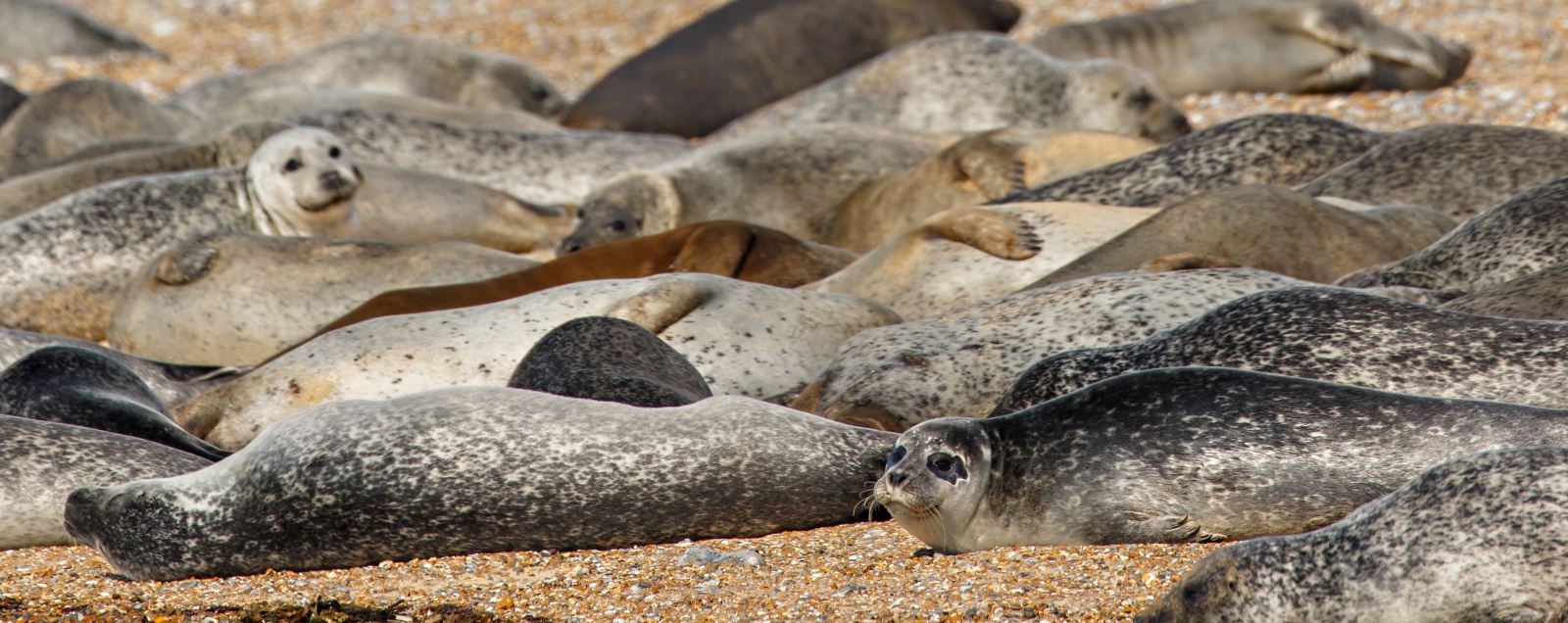To provide you with the best experience, cookies are used on this site. Learn more

To provide you with the best experience, cookies are used on this site. Learn more



You are here: See & Do > Seal Trips
There is nowhere like north Norfolk to get up close and see seals in their natural habitat, making it the natural choice for a visit. The colony at Blakeney Point, a nature reserve run by the National Trust since 1912, is home to Common and Grey seals, and with over 3,000 pups born each year, it makes Blakeney Point the largest colony in England. There are also large colonies at Horsey and Winterton-on-Sea and you can often see seals bobbing in the water or on the beach all along the north Norfolk coast. Seals can also be spotted in Wells harbour and on the sandbanks at Holkham. Both common and grey seals are protected species and 40% of the world’s Atlantic Grey seal population lives around the UK shores.

In the summer between June and August, Common seals have their young, while the Grey seals have their pups between November and January. With sandy beaches backed by dunes, no natural predators and very little disturbance, Blakeney Point is the perfect place for grey seals to live and give birth. The Grey pups are recognisable from their snowy white fur coats and big black eyes. The pups feed from their mothers for around three weeks, in which time they triple in size and shed their white fur, before heading into the sea.
1750x696(2).jpg)
Grey adult seals, the larger of the two species, have speckles on their coats and longer pointed heads with parallel nostrils, whereas the Common seals' faces are more rounded face with 'v' shaped nostrils. Mating takes place soon after pupping, when male seals (bulls), fight for territories; a dramatic sight to see.

Blakeney Point, with its distinctive blue Lifeboat House visitor centre, is a four-mile shingle and sand spit; it is also accessible by foot from Cley car park. Visitors, particularly those with dogs, should check seasonal restrictions (in place to protect nesting birds and fragile habitats). There are restrictions (to avoid disturbance to terns) accessing the Point by foot during key pupping periods; instead, you can see the seals by boat from Morston Quay. Please check here before you visit.
.jpeg)
Also recognised as internationally important for its breeding birds, you are likely to see Sandwich and Little Terns in Summer, as well as Common and Arctic Terns as they begin to arrive from West Africa in April. On the sands you might also see Oyster Catchers, Dunlin, Ringed Plovers and Turnstones. During the winter, you can often see duck and geese including Teal, Pintail, Pinkfooted Geese, noisily passing overhead.
.jpg)
The Atlantic Grey seal colony at Horsey and Winterton is one of Britain’s great wildlife spectacles. The flat beaches, shallow waters and high dunes offer seals an ideal location for giving birth and over 2,500 pups are born on these beaches each year. Friends of Horsey Seals help to keep the pups safe and there is a fenced viewing corridor, along with seal wardens, to keep visitors and seals at a safe distance to avoid human disturbance, especially during the three months when the seals come ashore to give birth to their young. There is a wonderful circular walk through the Area of Outstanding Natural Beauty, The Broads National Park, Horsey Beach, the village and Horsey Windpump taking in both gentle coastal and sweeping Norfolk Broads landscapes. Find out more here.

Times to take extra care: At breeding times and when over-wintering, animals and birds and their young are particularly vulnerable. Please check your visits don't disturb them: beginning of March to end of August is bird breeding season, beginning of November to end of March is the bird wintering season, beginning of June to end of August is the common seal breeding and the beginning of November to end of January is grey seal breeding season. Check for restrictions here before visiting.
.jpg)
Responsible seal viewing: Please follow recommended walking routes along Blakeney Point (three miles one-way on loose shingle) if walking to the colony and always respect fence lines and advice given by the National Trust. Check ahead before visiting, as restrictions are in place from late October to early January. Signs on the beach indicate how far along Blakeney Point you can walk. Or take one of the boat trips to see the seals safely in their own habitat.
At Horsey, please adhere to the marked viewing points. Keep dogs on short leads at all times (or avoid taking them at all) and please do not take your photo with the seals as this will disturb the protective mothers and fathers, which could result in serious injury to you and the pup. It is recommended to keep at least 100 metre distance.
See the Seals in North Norfolk



